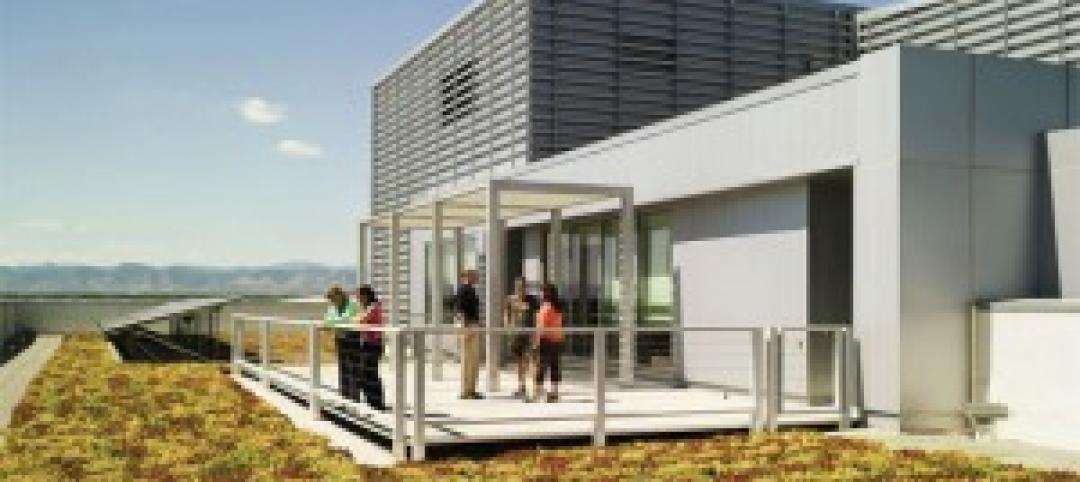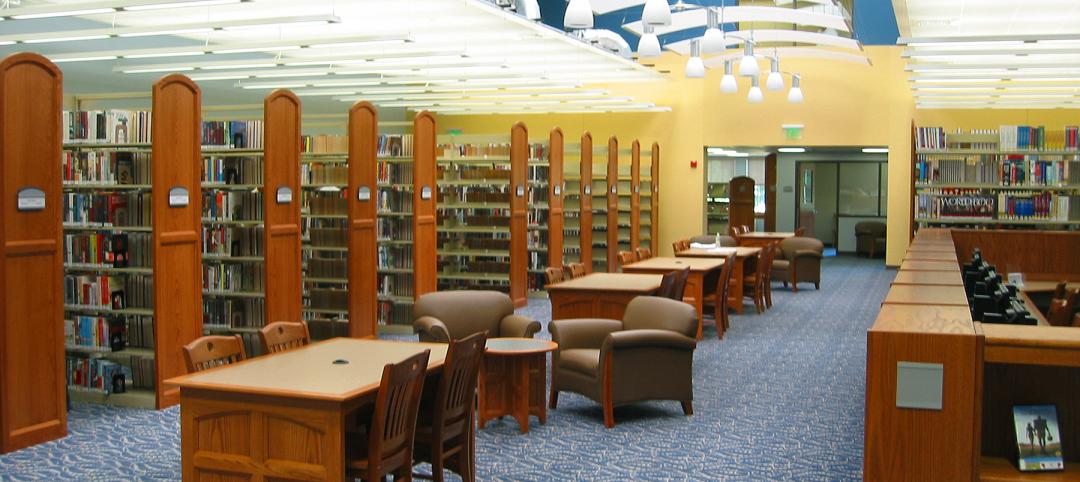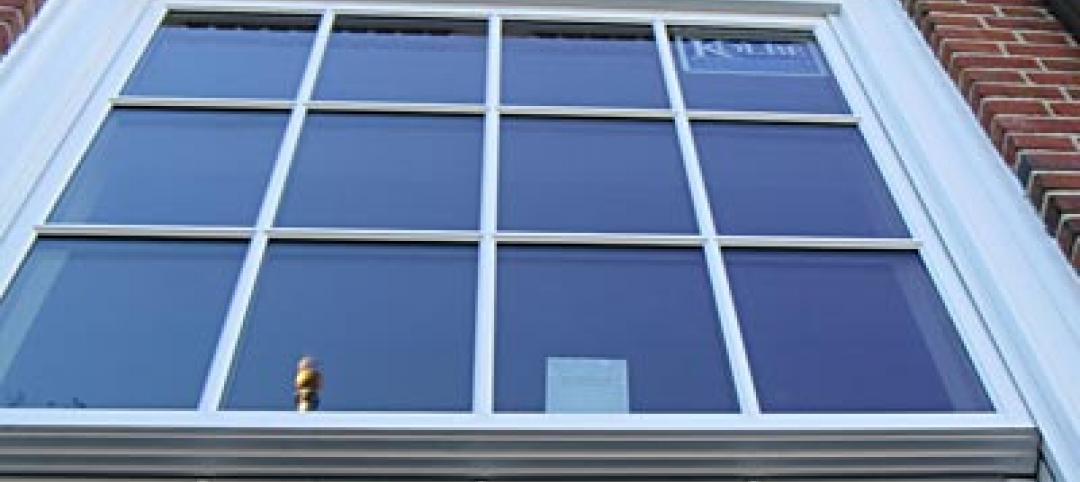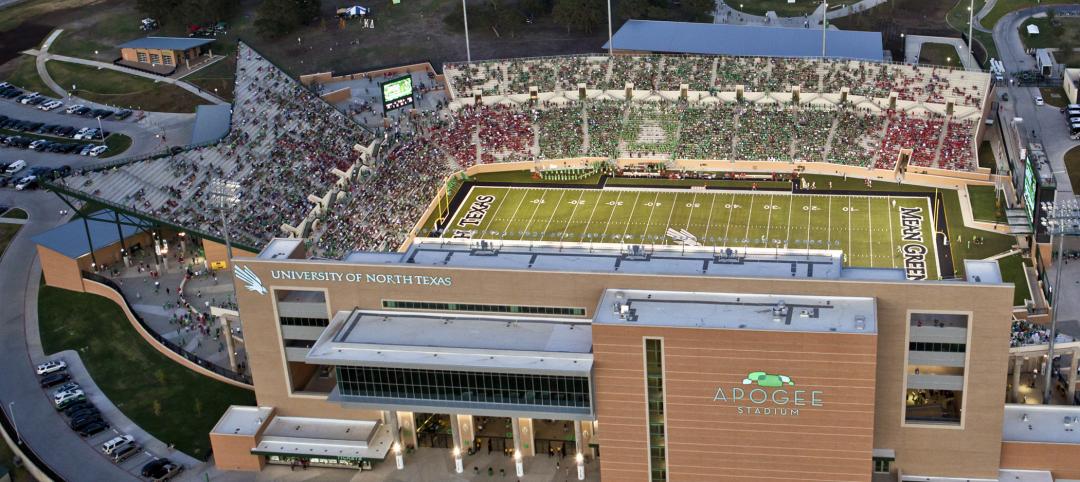In 1918, the actor-producer Henry Miller borrowed from friends and hired architects Paul R. Allen and Ingalls & Hoffman to build a 950-seat theater in neo-Georgian style. It was the first theater on Broadway to be air-conditioned.
Henry Miller's Theatre had its first hit in 1926 with Noel Coward's "The Vortex." Miller died later that year, and his son, Gilbert, took over. The venue enjoyed success through the 1960s, with performances by the likes of Helen Hayes, Douglas Fairbanks, and Leslie Howard.
The theater was sold to Seymour Durst in 1968, after which it went through various incarnations--as film house, porn palace, discotheque, and back to legitimate theater in 1988. It closed in 2004, around the time that the Durst Organization, now led by Seymour's son, Douglas, formed a joint venture with Bank of America, N.A., to build a two-million-square-foot LEED Platinum office building at One Bryant Park. The theater building was to be part of that project.
However, state officials determined that the theater structure itself had to be demolished because it could not be brought into compliance with New York City fire codes or the Americans with Disabilities Act. The exception was the historic facade, which state historic preservation officials ruled had to be saved at all costs. They also threw in another requirement: The height of the new theater could not exceed that of the old facade. The only way to do that would be to sink the new structure in the space behind the old facade.
The technical question that loomed over the Building Team, therefore, was this: Could they dig the deepest excavation in midtown Manhattan--70 feet below street level--without damaging the landmark facade? For the Durst Organization and Bank of America, this was no joke: they could incur millions in damages should the wall come tumbling down.
Structural engineer Severud Associates designed an elaborate three-story structural steel support frame to hold the wall up. The design had to be approved by the Empire State Development Corporation, which insisted that anchors could not be attached to the outside face of the wall. Severud and subcontractor Regional Scaffolding & Hoisting Co., Bronx, N.Y., overcame this problem by reaching the bracing through the existing window openings and anchoring the braces to the inside face.
The real worry was vibration--from workers attaching the support for the facade, even as they were detaching the facade from the old structure; from the demolition of the old theater; and from the excavation of the foundation pit for the theater and the skyscraper. The threshold for the vibrations was very low due to the old and partly unknown composition of the facade. The team determined that the maximum peak particle velocity could not exceed 0.5 inches per second. To check this, they installed wireless vibration and tilt monitors on the facade to provide instantaneous data by email so that Tishman Construction project managers and the structural engineers would know in seconds if something untoward was happening with the wall.
The demolition job itself was no picnic. The foundation had to be excavated deeper than usual to make room for the theater's back-of-the-house spaces (dressing rooms, etc.), the orchestra and mezzanine section, and building utilities; all this had to be sunk deep into the bedrock to keep the new theater from projecting above the historic facade, as required by the preservation authorities. The facade had to be underpinned during excavation, and the underpinning had to be secured with rock anchors. The contractor cut openings in the back side of the facade for new structural support columns. Bank of America Tower and the new theater were erected adjacent to the facade; then the facade was connected to the podium of new structure.
Meeting social needs
The judges were impressed with the Building Team and owner's sensitivity to the many social concerns raised in innumerable meetings with community boards, local planning organizations, theater companies, the Municipal Art Society, the New York Landmarks Conservancy, the New York State Historic Preservation Office, the Empire State Economic Development Corporation, the Mayor's Office, the city's Commissioner of Culture, and even the Natural Resources Defense Council, which coordinates the "Broadway Goes Green" program.
As a result of these consultations, the new theater went beyond the usual Broadway standard and added three times the code-required number of women's restroom facilities. In addition to the 20 ADA-mandated viewing stations, the team provided an additional restroom and drinking fountain for wheelchair users.
With regard to minority- and women-owned business involvement, Tishman exceeded the Empire State Development Corporation's target of 18% M/WBE participation by more than 12 percentage points. The construction manager also pushed its subcontractors hard on their hiring practices, a process that enabled the project to meet the goal of a 20% minority/women labor force.
The project is seeking LEED Gold status from the Green Building Certification Institute and is already the greenest theater on Broadway.
Henry Miller's Theatre reopened last November and is now operated by the Roundabout Theatre Company, which had a significant role in providing input to the design team on stage and orchestra design, sightlines, production lighting, and other aspects of performance-based design. Last March 22, it was renamed the Stephen Sondheim Theatre on the occasion of the composer-lyricist's 80th birthday.
One of my favorite Sondheim numbers is "The Madam's Song." Known popularly as "I Never Do Anything Twice," it goes like this:
Once, yes, once for a lark / Twice, though, loses the spark / But, no matter the price / I never do anything twice.
Theatergoers can be glad that the Durst Organization, Bank of America, and their Building Team chose to defy the song's proscription. They gave it another go and, without any loss of spark, successfully--no, magnificently--restored legitimate theater to this corner of West 43rd Street. It's grand to have the ol' gal back, and in such fine form. BD+C
PROJECT SUMMARY
Bronze Award
Stephen Sondheim Theatre (formerly Henry Miller's Theatre)
New York, N.Y.
Building Team
Submitting firm: Tishman Construction Corp. (CM)
Owner: One Bryant Park, LLC (joint venture of The Durst Organization and Bank of America, N.A.)
Design architect: Cook + Fox Architects
Executive architect: Adamson Associates Architects
Structural engineer: Severud Associates Consulting Engineers
Excavation and foundations: Civetta-Cousins JV
Mechanical/electrical engineer: Jaros Baum & Bolles
Theater consultant: Fisher Dachs Associates
Acoustic/AV consultant: Jaffe Holden Acoustics, Inc.
Historic preservation consultant: Higgins Quasebarth & Partners, LLC
General Information
Project size: 67,900 sf (1,055 seats)
Construction cost: Confidential, at owner's request
Construction time: April 2004 to May 2009
Delivery method: CM
Related Stories
| Oct 25, 2011
Commitment to green building practices pays off
The study, conducted by the Pacific Northwest National Laboratory, built on a good indication of the potential for increased productivity and performance pilot research completed two years ago, with similarly impressive results.
| Oct 25, 2011
DOE issues report on financing solar photovoltaic systems for K-12 schools
The report examines the two primary types of ownership models used to obtain solar installations. This analysis can help school administrators across the country select the best option for deploying solar technologies in their school districts.
| Oct 25, 2011
MKK participates in BSA Engineering Merit Badge day
MKK principal Craig Watts attended the event as a representative of the MEP (mechanical/electrical/plumbing) engineering industry to give scouts an idea of what’s involved in becoming a mechanical engineer, and an overview of a typical day in the life of an engineer.
| Oct 24, 2011
FMI releases Adjust, Adapt, Act Study
The paper explores several case studies, including Sun Country Builders, Huen, BakerTriangle, Consigli, Skender Construction and Flatiron, and distills the key factors that make these companies unique and successful.
| Oct 24, 2011
BBS Architects & Engineers receives 2011 Sustainable Design Award from AIA Long Island Chapter
AIA LI also recognized BBS with the 2011 ARCHI Award Commendation for the St. Charles Resurrection Cemetery St. Charles Resurrection Cemetery Welcoming and Information Center in Farmingdale, NY.
| Oct 24, 2011
Kolbe adds 3-D models of direct set windows to BIM library?
Beveled Direct Set SketchUp and Revit Models available.
| Oct 20, 2011
UNT receives nation’s first LEED Platinum designation for collegiate stadium
Apogee Stadium will achieve another first in December with the completion of three wind turbines that will feed the electrical grid that powers the stadium.
| Oct 20, 2011
Process leads to new design values for southern pine and other visually graded dimension lumber
A summary of the process used to develop new design values will clarify many of the questions received by the SFPA.
| Oct 20, 2011
Johnson Controls appoints Wojciechowski to lead real estate and facilities management business for Global Technology sector
Wojciechowski will be responsible for leading the continued growth of the technology vertical market, while building on the expertise the company has developed serving multinational technology companies.
| Oct 20, 2011
Stellar hires Navy veteran Taylor as vice president
Stellar’s federal experience includes military exchanges (large retail stores on military bases), lodging facilities for military personnel, fuel stations, youth activities centers and recreational centers.

















